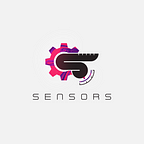WELCOME ABOARD SENSORS!!
What is the connection between airplanes and sensors?
We all know that a flight carries thousands of passengers along with thousands of goods. Things do not end here. It takes a lot of effort to build a flight that safely cruises the passengers or goods across countries, crossing many water bodies and flying through the skies.
Operating a plane is an assiduous task. Simultaneously, the plane has to perform a lot of functions in its flight. There are devices associated with an aircraft that are essential for its well-functioning. But these devices can function well only with the help of the crew or the pilot. Most importantly, we should know what bridges the device with its appropriate function. That bridge is called sensors.
It will be overwhelming to write about every sensor present in a plane since roughly a plane has around 10,000 sensors. Hence, we will mainly focus on those sensors which contribute to the salient functions of the aircraft.
A vehicle will run if it has the right amount of fuel, keeping it at the right temperature. Airplanes follow the same principle. Flow sensors check the quantity of coolant liquid present during fuel transfer.
The most significant part of a plane journey would be the plane’s take-off, landing, taxiing and in-flight. For these operations to be smooth, a wide range of sensors finds a place in airplanes. Load sensors help in measuring the lift of the plane and the load on the landing gear. Torque, force and vibration sensors are helpful for the brake system in an aircraft.
Position sensors find significance in airplanes. They are helpful in the functioning of various components of the aircraft, and also for the entire aircraft as a whole. Examples are Linear Variable Differential Transformers (LVDT) and Rotary Variable Differential Transformers (RVDT).
Pressure sensors have a lot of applications in a plane. Be it for the management of oxygen tanks, or for keeping an eye on the hydraulic and fluid systems, either on the wheels to withstand pressure while take-off and landing, these sensors are ready to guard the aircraft!
The temperature of the operating fuel, conditions of hydraulic oils, and the environmental cooling systems are managed by temperature sensors. A temperature sensor must have a check on the fuel temperature. Any abnormalities associated with it could be fatal for the entire flight. Examples are thermocouples, thermistors, etc.
Variations in static air pressure will determine the altitude at which the plane should be flying. For this, Altimeters are used. One would be scared and would run out of breath if the plane has less oxygen circulating in the cabin. To mitigate this, oxygen sensors are used. They indicate if the cabin has less oxygen than required.
Tachometers do find a place among the pool of sensors used in planes. Used in turbine engines, tachometers indicate the rpm (rotations per minute) of the engine along with the change in magnetic flux density of the engine.
Recently, the airline mogul Airbus announced that it is interested in creating an aircraft model with a capacity of 1000 passengers. These models will have around 10,000 sensors just in one wing.
The words ‘Engine’, ‘Hydraulic’, ‘Fleet’, ‘Fuel’ come to mind, while thinking about planes. It might be easy to overlook the myriad of sensors used in manufacturing a flight. But the truth is, sensors and aviation are inextricable. If the sensors work properly, then the devices would. Eventually, the entire plane will function well.
Researched and written by Meenakshi and Pola Vaishnavi Devi.
